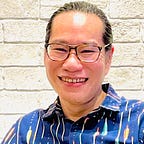The Predictable Narrative
At the heart of the matter with AIDS is this predictable narrative, churned out annually by societies in Southeast Asia. Is this the story we are selling the public? Can we logically expect anyone to come forward and engage in care after reading this? Is this really the prospect of living with HIV that we want to be sharing with the public in conjunction with World AIDS Day? Seriously?
As I’ve just been writing about this, and have also been saying it out loud, I really had hoped that on World AIDS Day in 2021, this is not the kinds of stories we will continue to share. And yet it remains the only story we seemed to be able to tell. It is not the fault of the editor or the journalist. Raginah Kassim’s story is complex, and more empowering than how it is being framed in the article. In case you’re asking, I’ve checked.
It is the conditioning of consciousness embedded in the narrative structure that public health communications has become accustomed to; one that uses fear as a deterrent. One only has to count the number of words with positive and negative valence in relation to AIDS and come up with an objective measure of AIDS related stigma in society.
All that’s required is a comparative analysis on the emotions that’s being surreptitiously communicated between the lines of the narrative structure, the kind of study that we have yet to do. It’s also something I’ve been working on for a number of years. Negative emotional valence is pernicious. It is just the kind of thing that gets under the skin of the public, and one that will be contributing to priming public consciousness about AIDS.
This type of storyline, on balance with more words that have negative valence related to AIDS, in my estimation, is one of the major reasons as to why we cannot seem to end AIDS despite advances in medical treatment. It is also pervasive because so few people living with HIV are empowered enough to challenge it. It is as if the 38 million people infected with HIV around the world, and the 6 million in Southeast Asia alone, have been cowed, condemned to repeat the endless cycle of despair.
Any serious scholar interested in the phenomenon of AIDS only has to ask, who began this cycle of stigma, and how come it’s been able to persist for 40 years?
To end, allow me to make a prediction on the eve of World AIDS Day on December 1st 2021: Unless and until we switched from the predictable narrative of doom and gloom to one that empowers people living with HIV to rise above their treatable condition, we shall not be ending AIDS in Southeast Asia by 2030. Make me eat my words, please.
Links:
For the 29th Nov news article in The Sun: https://ipaper.thesundaily.my/epaper/viewer.aspx?publication=The%20Sun%20Daily#page/6
For my 18th Nov FB post on not squandering the public relations opportunity of a lifetime: https://www.facebook.com/1071003457/posts/10223545609322944/
For my 20th Nov FB post on AIDS related stigma as originally conceptualised by sociologist Erving Goffman: https://www.facebook.com/1071003457/posts/10223567231223478/
